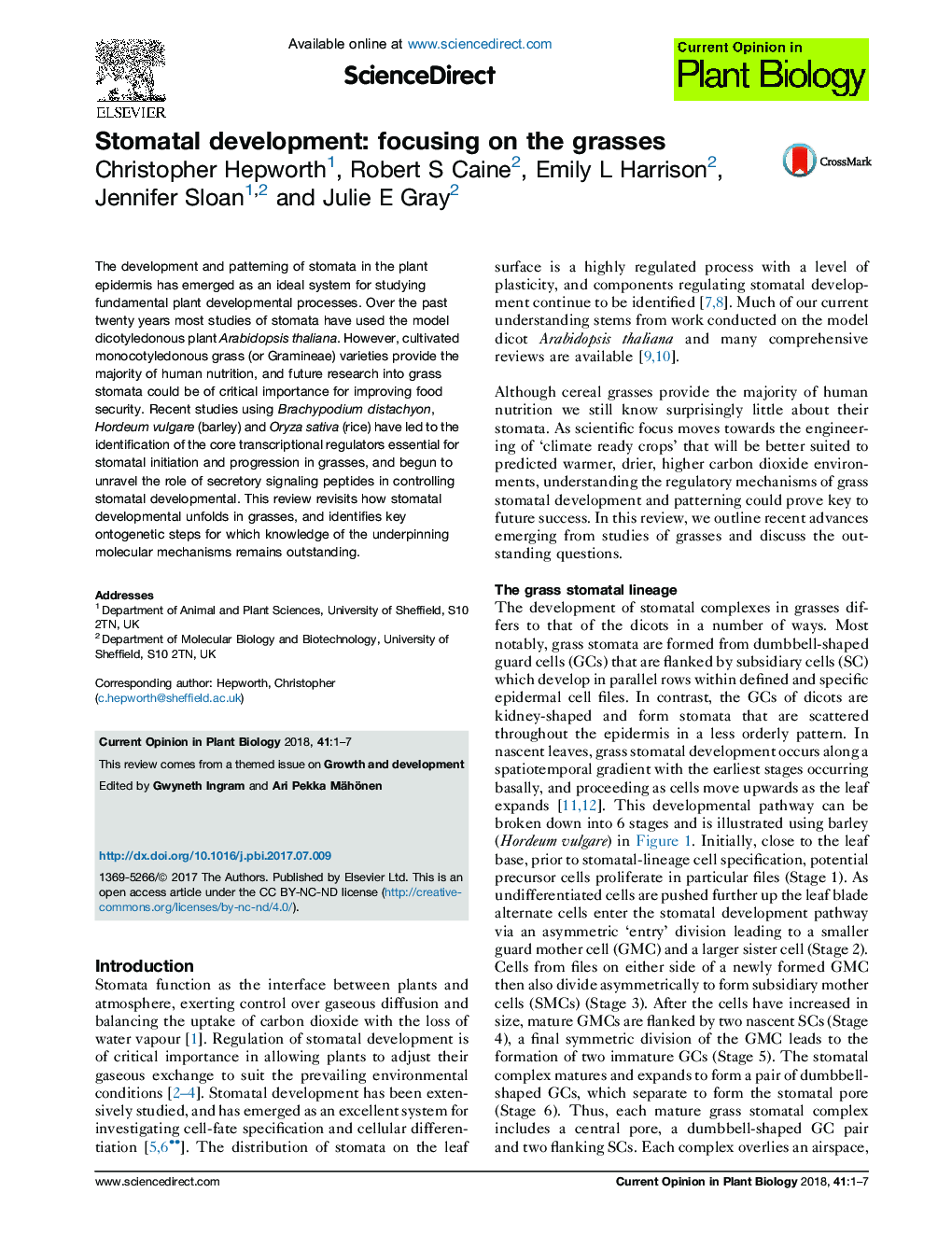| کد مقاله | کد نشریه | سال انتشار | مقاله انگلیسی | نسخه تمام متن |
|---|---|---|---|---|
| 5517347 | 1543194 | 2018 | 7 صفحه PDF | دانلود رایگان |
- Grass stomatal complexes differ from those of dicots.
- Grasses form rows of dumbbell-shaped guard cell pairs flanked by subsidiary cells.
- Grasses and dicots share differently regulated orthologous transcription factors.
- Both grasses and dicots use epidermal patterning factor family signaling peptides.
- Manipulation of epidermal patterning factors enhances cereal water use efficiency.
The development and patterning of stomata in the plant epidermis has emerged as an ideal system for studying fundamental plant developmental processes. Over the past twenty years most studies of stomata have used the model dicotyledonous plant Arabidopsis thaliana. However, cultivated monocotyledonous grass (or Gramineae) varieties provide the majority of human nutrition, and future research into grass stomata could be of critical importance for improving food security. Recent studies using Brachypodium distachyon, Hordeum vulgare (barley) and Oryza sativa (rice) have led to the identification of the core transcriptional regulators essential for stomatal initiation and progression in grasses, and begun to unravel the role of secretory signaling peptides in controlling stomatal developmental. This review revisits how stomatal developmental unfolds in grasses, and identifies key ontogenetic steps for which knowledge of the underpinning molecular mechanisms remains outstanding.
212
Journal: Current Opinion in Plant Biology - Volume 41, February 2018, Pages 1-7
